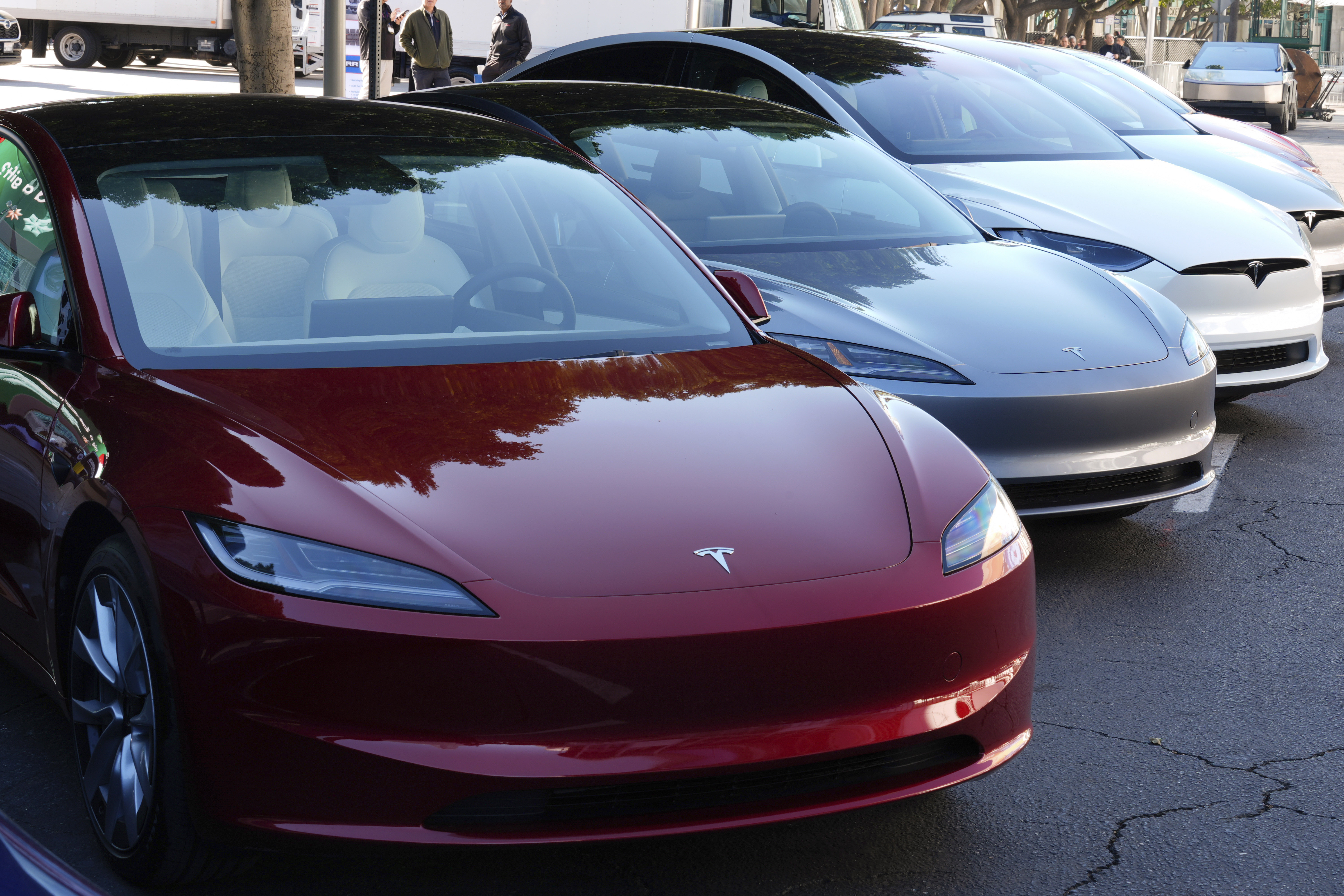(iSeeCars) – It used to be that there was a clear demarcation between a coupe and sedan: one had two doors, the other had four. But the difference between sedan and coupe has blurred.
In the quest for market share, automakers have tried to merge lines between these body styles, and door count is no longer a clear indicator. Unconventional designs, like a four-door Mercedes SUV coupe, now exist, and there’s more coming every year. All this begs the question: what is the difference between a sedan and a coupe?
Despite the liberal usage of the word coupe, there are still a few critical differences that separate the two body styles. We’ve outlined the two body styles below.
The Sedan
For years, the term “sedan” has referenced a four-door vehicle utilizing what the industry calls a three-box design. This is an automotive form that considers the hood, passenger compartment, and trunk as three distinct parts, with each part separate from the other.
The Toyota Camry or Hyundai Sonata are two examples that showcase all the typical traits of a sedan. Both sedan models have an engine compartment upfront that’s capped by the hood, which flows into the passenger area by way of the windshield and forward roof pillars, known as the A pillars. From there the roof pushes back towards the rear glass at a slight downward slope; where the rear glass begins there is a sharp descent down to the trunk. The trunk juts out towards the rear of the vehicle on a relatively flat plane.
This basic exterior styling represents your standard car: hood, roof, trunk. But plenty of modern cars are pushing that silhouette to its most windswept limits. The Honda Accord, for instance, has a profile that looks like a hatchback – a design where the rear glass slopes down into an integrated trunk lid, which appears hinged at the top of the glass and opens as one piece – but in fact has a separate trunk. The Tesla Model S, by contrast, looks like a sedan but is actually a hatchback. The Audi A7 is another popular hatchback that likes to masquerade as a sedan. Sedans generally have shorter doors to allow for ease of entering and exiting the vehicle and to provide a balanced look.
There’s also been a trend toward four-door coupes, but we’ll cover these in the next section.
The Coupe
As a sedan has historically had four doors, the coupe has historically had two. For a long time, a coupe was a pillarless – that is, no pillars behind the doors – two-door, fixed-roof vehicle that could either have a separate trunk lid or hatchback design with rear glass that opens. Vehicles like the Toyota 86, Ford Mustang, and Honda Civic coupe represent the traditional coupe design. Typical attributes of these cars include longer doors, less interior space, severely reduced leg room in the back seats, and smaller rear windows. In other words, they usually represent a sacrifice in practicality in the name of style.
But the coupe is no longer so easily defined. Automakers have capitalized on the romance of the coupe in an effort to sell more practical vehicles – perhaps not a surprising move, considering the sales of traditional coupes have diminished since the last hurrah for the body style in the 1980s and 1990s. This renewed effort by automakers has resulted in various sedans and SUVs being branded as coupes.
Most common among these transmogrified machines are the four-door sedans known as or marketed as coupes. Examples of this breed include the BMW 6-Series Gran Coupe, Mercedes-Benz AMG GT, and the Volkswagen Arteon. These four-door models each put style over pragmatism.
SUVs have also taken to calling themselves coupes, despite having four doors and traditional roof pillars. They differentiate themselves from the standard SUVs they’re based on by way of a dramatic, coupe-like roofline. Examples of this breed include the Mercedes GLE Coupe, BMW X6 Coupe, and Porsche Cayenne Coupe.
So what is the main difference between a coupe and sedan?
With all the muddling of names, the difference between a sedan and a coupe is no longer so much technical as it is strategic. A coupe is symbolic of driving being the vehicle’s primary focus, offering sportier performance than its sedan counterpart – think sports cars and premium luxury cars meant to carry no more than two occupants. A sedan has a comparatively stodgy image, conjuring up thoughts of Dad driving to the office every morning while picking up his carpool cohorts along the way. Yet there’s no doubting the superior practicality of the sedan over the inherently compromised coupe.
The solution? Label the most stylish four-doors in the lineup as coupes. Buyers get the usability of a four-door – in either sedan or hatchback guise – with a swept-back profile that can only stem from a rakish roofline. The coupe branding and stylish look are suggestive of the typical two-door image, but there’s an added dose of practicality that can’t be had in a bona-fide coupe.
If we had to define it today, we would prefer to say a coupe is a two-door vehicle and a sedan is a four-door model. But with the current market, a better, more modern definition might be that a coupe is an image car – a beauty queen to showcase design while sacrificing practicality for styling. A Mercedes AMG GT has four doors, but it checks the necessary boxes for our definition: it has a swoopy roofline, expensive price tag, emotive styling, and acts as one of the flagships of the lineup. It’s creatively labeled as a coupe by Mercedes.
By contrast, the Mercedes-Benz S-Class, despite being a pricey flagship, is a sedan through and through. It has an upright profile, uses framed door glass and visible side pillars, and offers an ample amount of interior room for front and rear passengers. It does not aim to please by style alone, but rather through interior size, amenities, and comfort. This is unlike the AMG GT, which is willing to leave interior comfort on the table in favor of a more pleasing, youthful aesthetic. That’s a more effective manner to determine whether something is a coupe or sedan in today’s befuddled, non-traditional marketplace of misnomers.
The Bottom Line
Whether it has two doors or four, a coupe is inherently a sacrifice. Compared to a sedan, the traditional two-door coupe gives up a usable rear seat, good visibility, and plenty of cargo space and interior space. You’ll also pay more for insurance premiums for a two-door car. Due to their larger size, sedans can come with more powerful engine options and suspension upgrades to provide a more pleasurable driving experience, though performance-oriented coupes will have both powerful engines and advanced suspension components.
These drawbacks have kept people from buying coupes in large numbers. But the new wave of four-door coupes tries to marry the image of the coupe with the practical attributes of a four-door sedan or SUV. These new genre-crossing machines might not be traditional coupes, but they are coupes in spirit.
That’s enough for buyers to embrace these sporty vehicles, and the success of these multi-doored coupes show that buyers don’t care about the number of doors – it’s the design that gets them excited. If the dealerships continue to sell them, you can bet the trend of four-door coupe models will continue.
More from iSeeCars:
If you’re in the market for a new or used passenger car, you can search over 4 million used and new cars, trucks, and SUVs with iSeeCars’ award-winning car search engine that helps shoppers find the best car deals by providing key insights and valuable resources, like the iSeeCars VIN check report. Whether you want a coupe or sedan, car buying has never been so easy.
This article, Sedan Vs. Coupe: What’s the Difference?, originally appeared on iSeeCars.com.

























